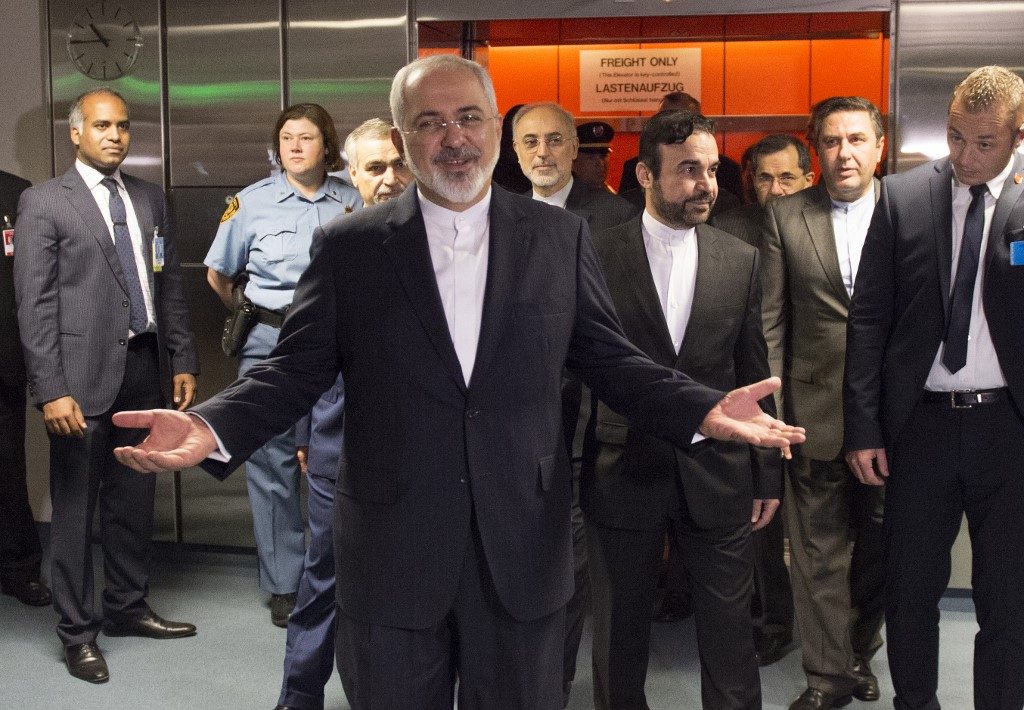SUMMARY
This is AI generated summarization, which may have errors. For context, always refer to the full article.

VIENNA, Austria – The Iran nuclear deal was already in tatters before the country announced the latest rollback of its commitments under the 2015 accord following the US assassination of a top general.
But Iran has not said it wants to quit the agreement, leaving some room for the deal’s remaining parties – Britain, China, France, Germany and Russia – to try to save it, according to analysts.
What is the impact?
Iran had been expected to announce a new step back from its commitments under the deal following a series of measures since May last year in response to the US pulling out of the accord in 2018 and reinstating sanctions.
The latest decision – to forego the limit on the number of centrifuges used in uranium enrichment – was in line with Iran’s previous announcements, according to a diplomat.
“There is nothing enormously new,” the diplomat who is familiar with the matter told Agence France-Presse, adding it was a “relief” the Islamic republic did not go even further.
Iran is “politically very careful…. They are not saying we are leaving the deal,” said Robert Kelley, a former inspections chief at the International Atomic Energy Agency (IAEA), which monitors the deal’s implementation.
The January 3 US killing of a top Iranian commander, Qasem Soleimani, in Baghdad in a drone strike has added to geopolitical tensions, while the 2015 accord – known formally as the Joint Comprehensive Plan of Action – had already been shaky.
The JCPOA offered Iran sanctions relief in exchange for scaling back its nuclear program, but remaining parties to the deal have so far been unable to find an efficient way to skirt reimposed US sanctions.
“Iran’s decision to put aside the cap on the number of centrifuges as its fifth step away from its JCPOA commitments is less harsh than the initially feared resumption of 20% enrichment,” Ali Vaez of International Crisis Group tweeted.
The accord capped Iran’s uranium enrichment at 3.67%, sufficient for power generation but far below the more than 90% level required for a nuclear weapon.
Iran has already broken that limit with enrichment reaching 4.5% by November – still below the 20% level it had previously operated.
It has always denied any military dimension to its nuclear program.
On Sunday, January 5, Tehran also stressed it would continue to work with the UN’s nuclear watchdog, the IAEA, which sends inspectors to Iran to monitor its activities.
“The JCPOA may be a zombie, but it is not dead yet,” Richard Johnson of the Washington-based organization Nuclear Threat Initiative tweeted.
Centrifuges explained?
Centrifuges are used to enrich uranium.
Under the nuclear deal, Iran agreed to slash their number to 5,060 from more than 19,000, and to maintain that level for a decade.
It also agreed to use only less efficient, first-generation centrifuges.
In September, the IAEA said Iran had started using advanced centrifuges to enrich uranium at its Natanz plant.
Two months later, Tehran said it had resumed uranium enrichment at the underground Fordo plant south of the Iranian capital.
It remains to be seen how Iran will expand uranium enrichment after its latest declaration.
“We will enter a period of waiting where we will see what is happening on the ground,” the diplomat said, adding “technical details provided to the IAEA by Iran would give an idea” of the extent of the latest move.
Analyst Kelsey Davenport of the Arms Control Association said “production rates and how quickly Iran’s stockpile grows” depended on how many more centrifuges and what types Iran would install and use.
Why is time of the essence?
The 2015 accord aimed to secure at least one year of the so-called “breakout time” – the period needed to produce weapons-grade material for a bomb – though Iran has always denied this was its aim.
Davenport said that timeframe was “slightly less” after Iran’s steps in 2019.
If Tehran was to step up uranium enrichment to 20% combined with an increase in the number and efficiency of its centrifuges, this would shrink further.
“Iran’s nuclear program no longer faces any limitation in the operational field,” the government said on Sunday.
This extended to Iran’s capacity for enriching uranium, the level of enrichment carried out, the amount enriched, and other research and development, it said.
However, Tehran underlined again that any steps would be reversible should US sanctions be lifted.
Current tensions make the lifting of sanctions highly unlikely, but according to Kelley, Iran was “playing the game until the very, very end, so that they can say, ‘We never quit the deal.'” – Rappler.com
Add a comment
How does this make you feel?
There are no comments yet. Add your comment to start the conversation.